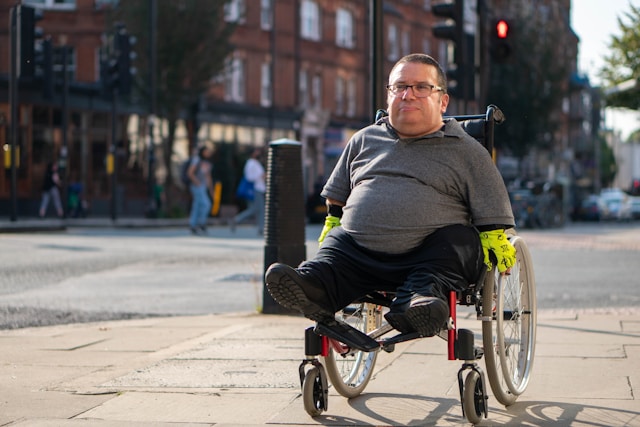
Productivity signals, such as enhanced skills and qualifications, do not appear to reduce hiring discrimination against disabled job seekers.
Policymakers in the UK have repeatedly tried to reduce the disability employment gap. However, despite evidence of disability-related discrimination in hiring, policy interventions have primarily focused on welfare reform to incentivize work.
In a recent IZA Discussion Paper, we explore the potential ways to address hiring discrimination against disabled job seekers. We do this by conducting a large-scale correspondence study in the UK, in which we send fictitious CVs to real job vacancies. These CVs are similar except for variations in disability status and productivity signals.
Our study focuses on discrimination against individuals with mobility disabilities, indicated by the use of a wheelchair. The job applications were sent for two occupations: (i) accountants and (ii) financial accounts assistants, where this disability does not affect job performance. The productivity signals we tested were a positive employer reference and additional education and technical skills listed on the CVs. We analyzed responses to more than 4,000 job applications and measured differences in employer call-back rates between disabled and non-disabled applicants.
Our findings show a 5.6 percentage point (15%) lower call-back rate for disabled job seekers, consistent with hiring discrimination. This gap was entirely driven by applications for the financial accounts assistant role.
Contrary to our expectations, none of the productivity signals we tested reduced the disability gap in call-backs. In fact, some signals appeared to benefit non-disabled applicants more, widening the gap. These findings suggest that discrimination may stem from employer prejudice rather than concerns about lower productivity from disabled employees.
We also examined whether the disability-related call-back gap varied by employer and job characteristics. Supporting the role of prejudice, we found larger gaps in call-backs for jobs that involve working closely with others or interacting with customers or clients.
In line with concerns about their effectiveness, we found no evidence that disability-related hiring gaps were smaller for jobs where employers promoted equal opportunities, including those referencing the government’s Disability Confident accreditation scheme. Additionally, we found no evidence that disability gaps were smaller for jobs advertising remote work, raising doubts about the effectiveness of remote work in addressing the disability employment gap.
Our findings suggest that, at least in specific occupations, enhancing productivity signals does not reduce disability-related discrimination in hiring. We also question the practical effectiveness of characteristics thought to benefit disabled job seekers, such as pro-equality messages from employers and the option of remote work.
© Armenak Antinyan, Ian Burn, and Melanie Jones
Armenak Antinyan is Head of Behavioral Economics at Thames Water
Ian Burn is Professor of Economics and Chair in Applied Microeconomics at the University of Liverpool
Melanie K. Jones is Professor of Economics at Cardiff Business School, Cardiff University and IZA Research Fellow
Please note:
We recognize that IZA World of Labor articles may prompt discussion and possibly controversy. Opinion pieces, such as the one above, capture ideas and debates concisely, and anchor them with real-world examples. Opinions stated here do not necessarily reflect those of the IZA.
Related IZA World of Labor content:
Disability and labor market outcomes by Melanie Jones
Anonymous job applications and hiring discrimination by Ulf Rinne
Correspondence testing studies by Dan-Olof Rooth
Do anti-discrimination policies work? by Marie-Anne Valfort
Foto by Centre for Aging Better on Unsplash